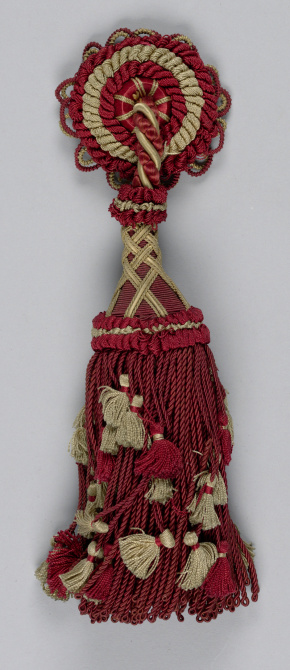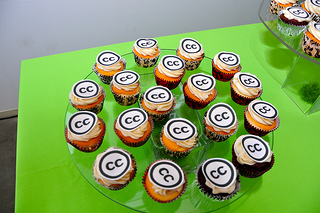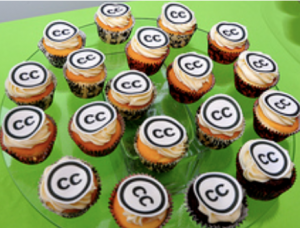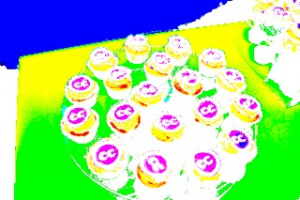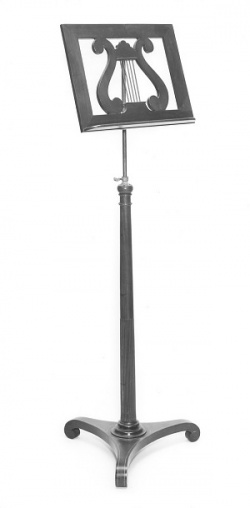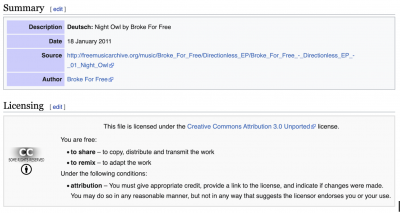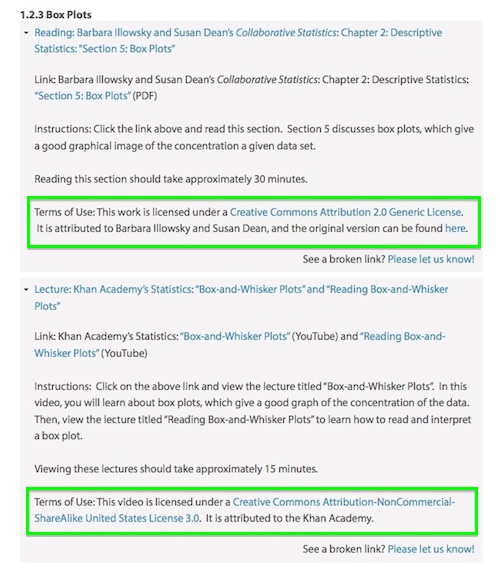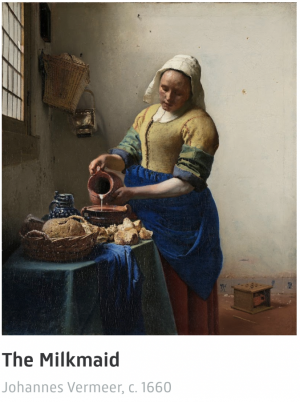Difference between revisions of "Recommended practices for attribution"
(→Best Practices for Marking Content with CC Licenses: Users) |
(add links to translation pdfs) |
||
| (188 intermediate revisions by 16 users not shown) | |||
| Line 1: | Line 1: | ||
| − | [[ | + | Read this in your language: ([https://creativecommons.org/wp-content/uploads/2024/10/Igbo-%E2%80%94-Recommended-Practices-for-Attribution.pdf Igbo]) ([https://creativecommons.org/wp-content/uploads/2024/10/Greek-%E2%80%94-Recommended-Practices-for-Attribution.pdf Ελληνικά]) ([https://creativecommons.org/wp-content/uploads/2024/10/Dutch%E2%80%94-Recommended-Practices-for-Attribution.pdf Nederlands]) ([https://creativecommons.org/wp-content/uploads/2024/10/Indonesian-%E2%80%94-Recommended-Practices-for-Attribution.pdf Bahasa Indonesia]) ([https://creativecommons.org/wp-content/uploads/2024/10/French-%E2%80%94-Recommended-Practices-for-Attribution.pdf français]) ([https://creativecommons.org/wp-content/uploads/2024/10/Turkish-%E2%80%94-Recommended-Practices-for-Attribution-1.pdf Türkçe]) ([https://creativecommons.org/wp-content/uploads/2024/10/Italian-%E2%80%94-Recommended-Practices-for-Attribution-1.pdf Swahili]) ([https://creativecommons.org/wp-content/uploads/2024/10/Italian-%E2%80%94-Recommended-Practices-for-Attribution-1.pdf italiano]) |
| − | [[ | + | |
| − | [[ | + | You can use CC-licensed materials as long as you follow the license conditions. One condition of all CC licenses is attribution: crediting the author and noting the source and the license. Generally speaking, attribution must reasonably include all relevant information supplied by the licensor. Because each use case is different, you can decide what form of attribution is most suitable for your specific situation. The following examples are intended to illustrate what typical prudent practices look like. We expect community norms and expectations to evolve with time, and will adapt this guide accordingly. |
| − | [[ | + | In addition to attribution, there are also [https://wiki.creativecommons.org/wiki/Considerations_for_licensors_and_licensees#Considerations_for_licensees|other things to consider as a licensor or a licensee]. If you are a licensor and would like to learn how to license your own material, take a look at [https://wiki.creativecommons.org/wiki/Marking_your_work_with_a_CC_license our guide on how to mark your work with a CC license]. |
| − | [[ | + | |
| − | [[ | + | ==Basic components of attribution== |
| − | + | ||
| + | [[File:19th_century_tassel_from_Smithsonian.jpeg|290px|left]] | ||
| + | |||
| + | Whenever you are reusing CC licensed works, we recommend that the attribution include the '''T'''itle, '''A'''uthor, '''S'''ource, and '''L'''icense. This is true whether you’re sharing the work as-is or if you have made an adaptation. To remember these attribution elements, it’s helpful to think of the acronym: '''TASL'''. | ||
| + | |||
| + | Let’s now go through '''TASL''' — we will explain each element in more detail: | ||
| + | |||
| + | '''Title''': What is the name of the work? | ||
| + | |||
| + | :If a title was provided for the work, include it as a part of the attribution. Sometimes a title is not provided; in that case, there’s no need to mention the title. | ||
| + | |||
| + | :The inclusion of title is a requirement of all CC licenses version 3.0 or earlier, and it is optional for the 4.0 suites. See [https://wiki.creativecommons.org/wiki/Recommended_practices_for_attribution#License_details License details]. | ||
| + | |||
| + | '''Author''': Who allows you to use the work? | ||
| + | |||
| + | :We often use “author” as a shorthand when we are, legally speaking, referring to the “licensor” (a.k.a., the “copyright holder” or “rightsholder”). This is because, in most CC-licensed works, the licensor is the same person or entity as the author. When an author is licensing their work under a CC license, and has made their name available, include the author’s name as a component in your attribution. Sometimes, the licensor may want you to give credit to some other entity, like a company or institution, or the licensor may want to be credited by a pseudonym instead of their real name. In rare cases, the licensor may not want to be attributed at all. In all of these cases, do what the licensor requests. | ||
| + | |||
| + | :Sometimes, the author will also provide a copyright notice, which consists of the copyright symbol, year of publication, and the name of the author/licensor. Include the copyright notice as a part of your attribution if such information is provided. | ||
| + | |||
| + | '''Source''': Where can people find the work? | ||
| + | |||
| + | :Please make it possible for future users to find the source of the material by including a URL or hyperlink where the work resides. This often is where you found the work. If you found it somewhere other than the original site, try to include information about the original site where the work was first shared publicly. It is also better to use the original URL instead of a shortened link, whether you are hyperlinking or printing out the entire URL. | ||
| + | |||
| + | '''License''': How can you use the work? | ||
| + | |||
| + | :You must specify which CC license was applied to the work you are reusing. Each of the six different CC licenses come with distinct requirements for re-use. We recommend that you name and provide a link to the license, e.g., [http://creativecommons.org/licenses/by/4.0 CC BY 4.0] (http://creativecommons.org/licenses/by/4.0) for a work licensed under CC BY 4.0. | ||
| + | |||
| + | :Consider also including the “disclaimer of warranties,” which clarifies that the author makes no representations or warranties about the non-infringement or absence of other defects concerning the CC-licensed work. In plain English, this means that the users will use the work at their own risk. | ||
| + | |||
| + | :To sum up, if the licensor has provided any information related to TASL, consider including them in your attribution. We also recommend providing links to the Title, Author, Source, and License, where possible, so future users can easily access the information they need on a work and the license terms. | ||
| + | <hr> | ||
| + | ===Reasonable attribution=== | ||
| + | |||
| + | The CC licenses ask you to be reasonable: | ||
| + | |||
| + | :<div style="padding: 1em; margin-bottom: 1em; border: 1px; background-color: #eee; width: 90%;">You may satisfy the attribution requirement in any reasonable manner based on the medium, means and context in which the Licensed Material is used. For example, it may be reasonable to satisfy some or all of the conditions by retaining a copyright notice, or by providing a URI or hyperlink associated with the Licensed Material, if the copyright notice or webpage includes some or all of the required information.</div> | ||
| + | |||
| + | There is no single best or correct way of attribution, as long as your attribution is reasonable and suited to the medium you're working with. | ||
| + | <hr> | ||
| + | |||
| + | ===License details=== | ||
| + | |||
| + | If you have any doubts or questions, you can read the complete attribution requirements which are spelled out in detail in the legal code of every CC license, eg. http://creativecommons.org/licenses/by/4.0/legalcode This [[License_Versions#Detailed_attribution_comparison_chart|chart compares the detailed requirements across all versions of CC licenses.]] | ||
| + | |||
| + | ==Examples of attribution== | ||
| + | |||
| + | We will now look at some examples in different media. | ||
| + | |||
| + | ===Attributing an image=== | ||
| + | |||
| + | Here is a photo. Below, we will go over some good and bad examples of how people might attribute it. | ||
| + | |||
| + | [[File:8256206923_c77e85319e_n.jpg]] | ||
| + | <hr> | ||
| + | |||
| + | ====This is a great attribution==== | ||
| + | <div style="padding: 1em; margin-bottom: 1em; border: 1px; background-color: #eee; width: 65%;"> | ||
| + | "[http://www.flickr.com/photos/sixteenmilesofstring/8256206923/in/set-72157632200936657 Creative Commons 10th Birthday Celebration San Francisco]" by [http://www.flickr.com/photos/sixteenmilesofstring/ Timothy Vollmer] is licensed under [http://creativecommons.org/licenses/by/4.0/ CC BY 4.0]</div> | ||
| + | |||
| + | ''Let’s go through TASL:'' | ||
| + | :'''T'''itle? "Creative Commons 10th Birthday Celebration San Francisco" | ||
| + | :'''A'''uthor? "[http://www.flickr.com/photos/sixteenmilesofstring/ Timothy Vollmer]" - linked to his profile page | ||
| + | :'''S'''ource? "[http://www.flickr.com/photos/sixteenmilesofstring/8256206923/in/set-72157632200936657 Creative Commons 10th Birthday Celebration San Francisco]" - linked to original Flickr page | ||
| + | :'''L'''icense? "[http://creativecommons.org/licenses/by/4.0/ CC BY 4.0]" - linked to license deed | ||
| + | |||
| + | Most importantly, this attribution reasonably includes all the relevant information provided by the author. | ||
| + | <hr> | ||
| + | |||
| + | ====This is a pretty good attribution==== | ||
| + | |||
| + | <div style="padding: 1em; margin-bottom: 1em; border: 1px; background-color: #eee; width: 65%;">[http://www.flickr.com/photos/sixteenmilesofstring/8256206923/in/set-72157632200936657 Photo] by Timothy Vollmer/ [http://creativecommons.org/licenses/by/2.0/ CC BY]</div> | ||
| + | |||
| + | ''Let’s go through TASL:'' | ||
| + | :'''T'''itle? Title is not noted but at least the source is linked. | ||
| + | :'''A'''uthor? "Timothy Vollmer" | ||
| + | :'''S'''ource? "[http://www.flickr.com/photos/sixteenmilesofstring/8256206923/in/set-72157632200936657 Photo]" - linked to original Flickr page | ||
| + | :'''L'''icense? "[http://creativecommons.org/licenses/by/4.0/ CC BY]" - linked to license deed | ||
| + | |||
| + | As you see, a good attribution includes all the essential '''TASL''' elements, even though they may not mirror the format of credit the author has requested. | ||
| + | <hr> | ||
| + | |||
| + | ==== This is an incorrect attribution==== | ||
| + | <div style="padding: 1em; margin-bottom: 1em; border: 1px; background-color: #eee; width: 65%;">Photo: Creative Commons</div> | ||
| + | |||
| + | ''Let’s go through TASL'': | ||
| + | :'''T'''itle? Title of the image is not noted | ||
| + | :'''A'''uthor? Author is not noted (It is a common mistake to attribute CC-licensed photos to CC, but Creative Commons is not the author!) | ||
| + | :'''S'''ource? No link to the original source | ||
| + | :'''L'''icense? There is no mention of a license nor a link to the license. "Creative Commons" is the name of an organization; it does not equate to any of the licenses maintained by the Creative Commons. | ||
| + | <hr> | ||
| + | |||
| + | ====This is a great attribution for an image you modified slightly==== | ||
| + | :[[File:Cropped_tvol_cupcake.png|300px]] | ||
| + | |||
| + | <div style="padding: 1em; margin-bottom: 1em; border: 1px; background-color: #eee; width: 65%;">"[http://www.flickr.com/photos/sixteenmilesofstring/8256206923/in/set-72157632200936657 Creative Commons 10th Birthday Celebration San Francisco]" by [http://www.flickr.com/photos/sixteenmilesofstring/ Timothy Vollmer], used under [http://creativecommons.org/licenses/by/4.0/ CC BY 4.0] / Cropped from original</div> | ||
| + | |||
| + | Here, information on '''T'''itle, '''A'''uthor, '''S'''ource, and '''L'''icense are all included as requested by the author. The slight modification is also noted and briefly described. | ||
| + | |||
| + | Note if the modification changes the work’s meaning in a way that would be considered creative — that is, not a purely mechanical change or a simple crop/excerpt that keeps the original message undistorted, it would be considered creating a new adaptation of the original work. You cannot rely on a CC license that does not allow adaptation (e.g., CC BY-ND or CC BY-NC-ND) when making such modifications. | ||
| + | |||
| + | <hr> | ||
| + | |||
| + | ====This is a great attribution for when you have created an adaptation==== | ||
| + | |||
| + | :[[File:8256206923_c77e85319e_n_90fied.jpg|300px]] | ||
| + | |||
| + | <div style="padding: 1em; margin-bottom: 1em; border: 1px; background-color: #eee; width: 65%;">This work, "90fied", is adapted from "[http://www.flickr.com/photos/sixteenmilesofstring/8256206923/in/set-72157632200936657 Creative Commons 10th Birthday Celebration San Francisco]" by [http://www.flickr.com/photos/sixteenmilesofstring/ Timothy Vollmer], used under [http://creativecommons.org/licenses/by/4.0/ CC BY 4.0]. "90fied" is licensed under [http://creativecommons.org/licenses/by/4.0/ CC BY 4.0] by [Your name here].</div> | ||
| + | |||
| + | ''Let’s go through TASL:'' | ||
| + | |||
| + | Original '''T'''itle, '''A'''uthor, '''S'''ource, and '''L'''icense are all noted. | ||
| + | |||
| + | The original work is referenced and the fact that it is an adaptation is also noted, so viewers can see what has changed. | ||
| + | |||
| + | The author and other attribution information for the new adapted work is also noted. | ||
| + | |||
| + | Note: If you're at a point where you are licensing works that are adaptations, go to [[Marking your work with a CC license]]. | ||
| + | <hr> | ||
| + | |||
| + | ===Attributing music=== | ||
| + | |||
| + | ====When you incorporate music in an audio or video recording==== | ||
| + | Music (both the underlying composition and the sound recordings) — such as a song, or a recording of natural sounds — can be attributed within the audio/video, and in the description text of the audio/video. How to attribute a CC licensed music in an audio or video recording will largely depend on what is reasonable for a chosen medium and platform. | ||
| + | |||
| + | Caution: Licenses with “ND” do not allow for adaptations. Your use of CC-licensed music is often an adaptation! | ||
| + | |||
| + | It is considered adaptation if you incorporate CC-licensed music into your work in a way that the CC-licensed music can no longer be seen as a stand-alone piece. For example, if you are using a song as background music in a podcast or in a video, it is considered an adaptation of the song. | ||
| + | |||
| + | Keep in mind that CC BY-ND and CC BY-NC-ND do not allow adaptations (although you may be authorized by law to do so, such as under a users’ right like fair use, or you may ask for the author’s permission independent of the CC license). | ||
| + | <hr> | ||
| + | |||
| + | [[File:Smithsonian_music_stand.jpeg|left|250px]] | ||
| + | |||
| + | =====This is a great attribution of background music in a podcast or a video===== | ||
| + | When reasonable to do so, we recommend that you include attribution both in the description box and in the podcast recording or the video recording itself. | ||
| + | |||
| + | If you are using the following song in a podcast: ‘Day Bird’ by Broke for Free ([https://brokeforfree.com brokeforfree.com]), this would be a great way to provide attribution (which you can see in [https://soundcloud.com/wearecc/open-minds-podcast-catherine-stihler-ceo-of-creative-commons the Creative Commons podcast]) — | ||
| + | |||
| + | :At the end of the podcast audio recording, the host says: | ||
| + | :<div style="padding: 1em; margin-bottom: 1em; border: 1px; background-color: #eee; width: 90%;">Special thanks to the musician Broke for Free, whose track “Day Bird” you heard at the beginning of this episode and you are listening to right now. It's under the Creative Commons Attribution License, meaning it's free for anyone to use. You can find it at the Free Music Archive—freemusicarchive.org</div> | ||
| + | |||
| + | :In the description box, the information text reads: | ||
| + | :<div style="padding: 1em; margin-bottom: 1em; border: 1px; background-color: #eee; width: 90%;">Theme music: “Day Bird” by Broke for Free ([https://brokeforfree.com brokeforfree.com]). Available for use under the CC BY 3.0 license ([https://creativecommons.org/licenses/by/3.0/ creativecommons.org/licenses/by/3.0/]), at [https://freemusicarchive.org/music/Broke_For_Free/Directionless_EP/Broke_For_Free_-_Directionless_EP_-_03_Day_Bird|the Free Music Archive].</div> | ||
| + | |||
| + | ''Let’s go through TASL:'' | ||
| + | |||
| + | :'''T'''itle? Both the recording and the description box include the title of the work, “Day Bird” | ||
| + | |||
| + | :'''A'''uthor? "Broke for Free," again, noted both in the recording and in the description box | ||
| + | |||
| + | :'''S'''ource? Both the author’s page and the archive’s page are included with links | ||
| + | |||
| + | :'''L'''icense? "CC BY 3.0" — linked to license deed | ||
| + | |||
| + | You cannot talk over, or remix, music licensed under CC BY-ND or CC BY-NC-ND. | ||
| + | |||
| + | <hr> | ||
| + | |||
| + | =====This is a bad attribution of background music in a podcast or a video===== | ||
| + | |||
| + | A bad attribution is one where you do not provide enough information for a user to find the music you are using. The following is a bad attribution for the same song: | ||
| + | |||
| + | :<div style="padding: 1em; margin-bottom: 1em; border: 1px; background-color: #eee; width: 65%;">No attribution is included in the podcast recording or the video itself. | ||
| + | |||
| + | In the description box, it says: “ Creative Commons music.”</div> | ||
| + | |||
| + | ''Let’s go through TASL:'' | ||
| − | + | :'''T'''itle? Title is not noted | |
| − | |||
| − | |||
| − | |||
| − | |||
| − | + | :'''A'''uthor? Author is not noted | |
| − | + | :'''S'''ource? Source is not noted; users cannot find the specific song used in the podcast | |
| − | + | :'''L'''icense? No information on the CC license | |
| − | + | The attribution information is not sufficient for people to find the song you have re-used. | |
| + | <hr> | ||
| − | + | ====When you are not adding new elements to the music==== | |
| + | When you re-use music without adding new elements to it, you are not making an adaptation. In that case, you can rely on any of the CC licenses, including CC BY-ND and CC BY-NC-ND. We recommend providing attribution information in writing. | ||
| − | + | [[File:Wiki_page_attributing_night_owl.png|400px]] | |
| − | + | On [https://commons.wikimedia.org/wiki/File:Broke_For_Free_-_01_-_Night_Owl.ogg this Wikipedia page], you can see an example of great attribution for the sharing another soundtrack, “Night Owl” by Broke for Free, when it’s without adaptation. | |
| − | + | ''Let’s go through TASL:'' | |
| + | |||
| + | '''T'''itle? Title of the work, “Night Owl,” is noted | ||
| − | + | '''A'''uthor? "Broke for Free," noted and linked to the author’s webpage | |
| − | + | '''S'''ource? A link is provided for the source | |
| − | + | '''L'''icense? "CC BY 3.0" — linked to license deed | |
| + | <hr> | ||
| − | + | ===Attributing text=== | |
| + | Let’s take [https://github.com/getify/You-Dont-Know-JS ''You Don't Know JS Yet'' (2nd Edition)] as an example, and go over what your attribution may look like if you reuse the book series. The information under the “License & Copyright” section looks like this on the webpage where the book series was originally shared: | ||
| + | :[[File:attributing_You_Don't_Know_JS_Yet_(2nd_Edition).png|200px]] | ||
| − | + | We recommend that you retain all the information provided by the author of the book series when it is reasonable for you to do so. For example, if you are distributing digital copies or excerpts of the book series in a free seminar, or using parts of the book in a free online course or presentation, the attribution will likely look something like this: | |
| − | + | :<div style="padding: 1em; margin-bottom: 1em; border: 1px; background-color: #eee; width: 65%;">This chapter is from “[https://github.com/getify/You-Dont-Know-JS You Don't Know JS Yet (2nd Edition)]” by [https://github.com/getify Kyle Simpson]. The book is licensed under the [https://creativecommons.org/licenses/by-nc-nd/4.0/ CC BY-NC-ND 4.0 license]. © 2019-2022 Kyle Simpson.</div> | |
| − | + | On the other hand, if you are distributing hard copies of the book series or excerpts from the book series, instead of using hyperlinks, you may wish to include the links so it’s easier for users to locate the original source of the book, the author, and the CC license: | |
| − | |||
| − | + | :<div style="padding: 1em; margin-bottom: 1em; border: 1px; background-color: #eee; width: 65%;">This chapter is from “You Don't Know JS Yet (2nd Edition)” (https://github.com/getify/You-Dont-Know-JS) by Kyle Simpson (https://github.com/getify). The book is licensed under the CC BY-NC-ND 4.0 license (https://creativecommons.org/licenses/by-nc-nd/4.0/). © 2019-2022 Kyle Simpson.</div> | |
| − | + | Note that the CC BY-NC-ND license includes the NoDerivatives requirement, which indicates that no adaptations are allowed. You cannot make any adaptations relying on the CC BY-NC-CD license the author chose for the book. If you would like to make a translation of the book, for example, you will need to ask the author for permission first. | |
| − | + | The CC BY-NC-ND license also includes the NonCommercial requirement. To learn more, take a look at [https://en.wikipedia.org/wiki/Creative_Commons_NonCommercial_license our guide about the NonCommercial licenses]. | |
| + | <hr> | ||
| − | + | === Attributing materials from multiple sources === | |
| − | |||
| − | + | :[[File:Saylor_marking_example.jpg]] | |
| − | + | ''Let’s go through TASL:'' | |
| − | + | :'''T'''itle? Specific works are named, e.g., "Box-and-whisker Plots" | |
| − | + | :'''A'''uthor? Different authors noted for the different works | |
| − | + | :'''S'''ource? Original materials are linked for each work | |
| − | + | :'''L'''icense? The different licenses (Creative Commons Attribution for Collaborative Statistics and Creative Commons Attribution-Noncommercial-ShareAlike for the Khan Academy video) are spelled out and linked for each work | |
| − | + | :Lastly, it is clear which attribution belongs to which work. | |
| − | + | You can visit the [http://www.saylor.org/courses/ma121/ Saylor.org Introduction to Statistics course page] to see how they marked it up directly. | |
| − | + | <hr> | |
| − | + | === Publishing attribution on a separate web page === | |
| + | As stated above, recommended attribution depends on the medium you're working with. For media such as offline materials, video, audio, and images, consider publishing a web page with attribution information. For example, on a webpage featuring your audio recording, provide a credit list of material you used that adheres to best practices above. Doing so allows not only your material, but the materials you attribute, to be found by search engines and other web discovery tools. If possible within the medium, make the Author, Source, and License links the user can follow. | ||
| − | + | :<div style="padding: 1em; margin-bottom: 1em; border: 1px; background-color: #eee; width: 65%;">'''Example:'''<br>This video features the song [http://ccmixter.org/media/files/victor/6374 "Desaprendere (Treatment)"] by [http://fourstones.net/ fourstones], available under a Creative Commons [http://creativecommons.org/licenses/by-nc/2.5/ Attribution-Noncommercial 2.5 license].</div> | |
| − | + | <hr> | |
| − | + | ==Citing public domain materials== | |
| + | Although attribution is not a legal obligation under [https://creativecommons.org/share-your-work/public-domain/cc0/ CC0 dedication]’s or [https://creativecommons.org/share-your-work/public-domain/pdm/ CC Public Domain Mark]’s licensing terms, we recommend that you consider including information about the hosting institution for public domain materials when it is reasonable to do so. Citing public domain works in this way not only encourages institutions to digitize and share more public domain materials in their physical collections, but also empowers users to easily locate the original source. | ||
| − | + | Here is an example of citing the source of a public domain image. The following public domain image is digitized and hosted by the Rijksmuseum (the national museum of the Netherlands). The Rijksmuseum has applied a CC0 dedication to the image. | |
| − | + | :[[File:Attributing_the_milkmaid.png|300px]] | |
| − | + | You may provide credit in the following format: | |
| − | = | + | :<div style="padding: 1em; margin-bottom: 1em; border: 1px; background-color: #eee; width: 65%;">“[http://hdl.handle.net/10934/RM0001.COLLECT.6417 The Milkmaid]” by Vermeer. The Rijksmuseum collection. The image is dedicated to the public domain under [https://creativecommons.org/share-your-work/public-domain/cc0/ CC0]. </div> |
| − | + | In most cases, people credit the source regardless of the work’s copyright status. Especially in an academic setting, providing source information about other people’s works has long been considered crucial to academic integrity. Copyright cannot be the only checkbox when deciding whether a source will be credited. You can learn more about [https://creativecommons.org/faq/#what-is-the-difference-between-plagiarism-and-copyright-infringement-and-what-role-do-cc-licenses-play-to-address-plagiarism how our licenses interact with academic citation standards in our FAQ]. | |
| − | == | + | == Common pitfalls == |
| − | + | Below are some practices that you may wish to avoid. These practices are not always contrary to the Creative Commons licensing terms, but they often make it more challenging for users to find the original source and/or author. | |
| + | |||
| + | '''Attribute in alt text''' | ||
| + | :Alt text is intended to provide accessible information about visual materials for users with cognitive disabilities or visual impairment. Using this field for licensing information makes browsing difficult for those users. | ||
| − | + | '''Attribute in metadata fields only''' | |
| − | + | :While it is great to include attribution in metadata fields (such as EXIF for images), in most cases this is not the only place to include attribution information. This is because many users are likely not aware of, and will never see, attribution information included in metadata. | |
| − | |||
| − | |||
| − | |||
| − | |||
| − | |||
| − | |||
| − | |||
| − | + | '''Credit authors by names other than the ones they have selected''' | |
| + | :Many people believe that attribution must be given to the real name of the author of a work, but this is not the case — always give attribution to the name the author has specified, even if it is a pseudonym. If the author does not give a name or explicitly requests to be anonymous, you must give the other attribution information (i.e., “T” and “SL” from “TASL”) without crediting the author. | ||
| − | + | '''Credit a site (or Creative Commons itself!) instead of the author''' | |
| + | :Unless an author specifically requests users to only credit a site, crediting the site where you have found the material cannot substitute crediting the author. An author may have uploaded material to a site under a CC license, but in most cases, the copyright is still held by the author, and it is the copyright holder who needs to be credited. For example, many photos sourced from Wikimedia Commons are attributed to Wikimedia when they must be attributed to the authors. | ||
| − | |||
| − | + | [[Category:Marking]] | |
| − | + | [[Category:Licensing]] | |
| − | + | [[Category:Community]] | |
| + | [[Category:Media]] | ||
| + | [[Category:HOWTO]] | ||
| + | [[Category:Guide]] | ||
| + | {{Best Practice}} | ||
Latest revision as of 15:05, 4 December 2024
Read this in your language: (Igbo) (Ελληνικά) (Nederlands) (Bahasa Indonesia) (français) (Türkçe) (Swahili) (italiano)
You can use CC-licensed materials as long as you follow the license conditions. One condition of all CC licenses is attribution: crediting the author and noting the source and the license. Generally speaking, attribution must reasonably include all relevant information supplied by the licensor. Because each use case is different, you can decide what form of attribution is most suitable for your specific situation. The following examples are intended to illustrate what typical prudent practices look like. We expect community norms and expectations to evolve with time, and will adapt this guide accordingly. In addition to attribution, there are also things to consider as a licensor or a licensee. If you are a licensor and would like to learn how to license your own material, take a look at our guide on how to mark your work with a CC license.
Contents
Basic components of attribution
Whenever you are reusing CC licensed works, we recommend that the attribution include the Title, Author, Source, and License. This is true whether you’re sharing the work as-is or if you have made an adaptation. To remember these attribution elements, it’s helpful to think of the acronym: TASL.
Let’s now go through TASL — we will explain each element in more detail:
Title: What is the name of the work?
- If a title was provided for the work, include it as a part of the attribution. Sometimes a title is not provided; in that case, there’s no need to mention the title.
- The inclusion of title is a requirement of all CC licenses version 3.0 or earlier, and it is optional for the 4.0 suites. See License details.
Author: Who allows you to use the work?
- We often use “author” as a shorthand when we are, legally speaking, referring to the “licensor” (a.k.a., the “copyright holder” or “rightsholder”). This is because, in most CC-licensed works, the licensor is the same person or entity as the author. When an author is licensing their work under a CC license, and has made their name available, include the author’s name as a component in your attribution. Sometimes, the licensor may want you to give credit to some other entity, like a company or institution, or the licensor may want to be credited by a pseudonym instead of their real name. In rare cases, the licensor may not want to be attributed at all. In all of these cases, do what the licensor requests.
- Sometimes, the author will also provide a copyright notice, which consists of the copyright symbol, year of publication, and the name of the author/licensor. Include the copyright notice as a part of your attribution if such information is provided.
Source: Where can people find the work?
- Please make it possible for future users to find the source of the material by including a URL or hyperlink where the work resides. This often is where you found the work. If you found it somewhere other than the original site, try to include information about the original site where the work was first shared publicly. It is also better to use the original URL instead of a shortened link, whether you are hyperlinking or printing out the entire URL.
License: How can you use the work?
- You must specify which CC license was applied to the work you are reusing. Each of the six different CC licenses come with distinct requirements for re-use. We recommend that you name and provide a link to the license, e.g., CC BY 4.0 (http://creativecommons.org/licenses/by/4.0) for a work licensed under CC BY 4.0.
- Consider also including the “disclaimer of warranties,” which clarifies that the author makes no representations or warranties about the non-infringement or absence of other defects concerning the CC-licensed work. In plain English, this means that the users will use the work at their own risk.
- To sum up, if the licensor has provided any information related to TASL, consider including them in your attribution. We also recommend providing links to the Title, Author, Source, and License, where possible, so future users can easily access the information they need on a work and the license terms.
Reasonable attribution
The CC licenses ask you to be reasonable:
-
You may satisfy the attribution requirement in any reasonable manner based on the medium, means and context in which the Licensed Material is used. For example, it may be reasonable to satisfy some or all of the conditions by retaining a copyright notice, or by providing a URI or hyperlink associated with the Licensed Material, if the copyright notice or webpage includes some or all of the required information.
There is no single best or correct way of attribution, as long as your attribution is reasonable and suited to the medium you're working with.
License details
If you have any doubts or questions, you can read the complete attribution requirements which are spelled out in detail in the legal code of every CC license, eg. http://creativecommons.org/licenses/by/4.0/legalcode This chart compares the detailed requirements across all versions of CC licenses.
Examples of attribution
We will now look at some examples in different media.
Attributing an image
Here is a photo. Below, we will go over some good and bad examples of how people might attribute it.
This is a great attribution
Let’s go through TASL:
- Title? "Creative Commons 10th Birthday Celebration San Francisco"
- Author? "Timothy Vollmer" - linked to his profile page
- Source? "Creative Commons 10th Birthday Celebration San Francisco" - linked to original Flickr page
- License? "CC BY 4.0" - linked to license deed
Most importantly, this attribution reasonably includes all the relevant information provided by the author.
This is a pretty good attribution
Let’s go through TASL:
- Title? Title is not noted but at least the source is linked.
- Author? "Timothy Vollmer"
- Source? "Photo" - linked to original Flickr page
- License? "CC BY" - linked to license deed
As you see, a good attribution includes all the essential TASL elements, even though they may not mirror the format of credit the author has requested.
This is an incorrect attribution
Let’s go through TASL:
- Title? Title of the image is not noted
- Author? Author is not noted (It is a common mistake to attribute CC-licensed photos to CC, but Creative Commons is not the author!)
- Source? No link to the original source
- License? There is no mention of a license nor a link to the license. "Creative Commons" is the name of an organization; it does not equate to any of the licenses maintained by the Creative Commons.
This is a great attribution for an image you modified slightly
Here, information on Title, Author, Source, and License are all included as requested by the author. The slight modification is also noted and briefly described.
Note if the modification changes the work’s meaning in a way that would be considered creative — that is, not a purely mechanical change or a simple crop/excerpt that keeps the original message undistorted, it would be considered creating a new adaptation of the original work. You cannot rely on a CC license that does not allow adaptation (e.g., CC BY-ND or CC BY-NC-ND) when making such modifications.
This is a great attribution for when you have created an adaptation
Let’s go through TASL:
Original Title, Author, Source, and License are all noted.
The original work is referenced and the fact that it is an adaptation is also noted, so viewers can see what has changed.
The author and other attribution information for the new adapted work is also noted.
Note: If you're at a point where you are licensing works that are adaptations, go to Marking your work with a CC license.
Attributing music
When you incorporate music in an audio or video recording
Music (both the underlying composition and the sound recordings) — such as a song, or a recording of natural sounds — can be attributed within the audio/video, and in the description text of the audio/video. How to attribute a CC licensed music in an audio or video recording will largely depend on what is reasonable for a chosen medium and platform.
Caution: Licenses with “ND” do not allow for adaptations. Your use of CC-licensed music is often an adaptation!
It is considered adaptation if you incorporate CC-licensed music into your work in a way that the CC-licensed music can no longer be seen as a stand-alone piece. For example, if you are using a song as background music in a podcast or in a video, it is considered an adaptation of the song.
Keep in mind that CC BY-ND and CC BY-NC-ND do not allow adaptations (although you may be authorized by law to do so, such as under a users’ right like fair use, or you may ask for the author’s permission independent of the CC license).
This is a great attribution of background music in a podcast or a video
When reasonable to do so, we recommend that you include attribution both in the description box and in the podcast recording or the video recording itself.
If you are using the following song in a podcast: ‘Day Bird’ by Broke for Free (brokeforfree.com), this would be a great way to provide attribution (which you can see in the Creative Commons podcast) —
- At the end of the podcast audio recording, the host says:
-
Special thanks to the musician Broke for Free, whose track “Day Bird” you heard at the beginning of this episode and you are listening to right now. It's under the Creative Commons Attribution License, meaning it's free for anyone to use. You can find it at the Free Music Archive—freemusicarchive.org
- In the description box, the information text reads:
-
Theme music: “Day Bird” by Broke for Free (brokeforfree.com). Available for use under the CC BY 3.0 license (creativecommons.org/licenses/by/3.0/), at Free Music Archive.
Let’s go through TASL:
- Title? Both the recording and the description box include the title of the work, “Day Bird”
- Author? "Broke for Free," again, noted both in the recording and in the description box
- Source? Both the author’s page and the archive’s page are included with links
- License? "CC BY 3.0" — linked to license deed
You cannot talk over, or remix, music licensed under CC BY-ND or CC BY-NC-ND.
This is a bad attribution of background music in a podcast or a video
A bad attribution is one where you do not provide enough information for a user to find the music you are using. The following is a bad attribution for the same song:
-
No attribution is included in the podcast recording or the video itself.
In the description box, it says: “ Creative Commons music.”
Let’s go through TASL:
- Title? Title is not noted
- Author? Author is not noted
- Source? Source is not noted; users cannot find the specific song used in the podcast
- License? No information on the CC license
The attribution information is not sufficient for people to find the song you have re-used.
When you are not adding new elements to the music
When you re-use music without adding new elements to it, you are not making an adaptation. In that case, you can rely on any of the CC licenses, including CC BY-ND and CC BY-NC-ND. We recommend providing attribution information in writing.
On this Wikipedia page, you can see an example of great attribution for the sharing another soundtrack, “Night Owl” by Broke for Free, when it’s without adaptation.
Let’s go through TASL:
Title? Title of the work, “Night Owl,” is noted
Author? "Broke for Free," noted and linked to the author’s webpage
Source? A link is provided for the source
License? "CC BY 3.0" — linked to license deed
Attributing text
Let’s take You Don't Know JS Yet (2nd Edition) as an example, and go over what your attribution may look like if you reuse the book series. The information under the “License & Copyright” section looks like this on the webpage where the book series was originally shared:
We recommend that you retain all the information provided by the author of the book series when it is reasonable for you to do so. For example, if you are distributing digital copies or excerpts of the book series in a free seminar, or using parts of the book in a free online course or presentation, the attribution will likely look something like this:
-
This chapter is from “You Don't Know JS Yet (2nd Edition)” by Kyle Simpson. The book is licensed under the CC BY-NC-ND 4.0 license. © 2019-2022 Kyle Simpson.
On the other hand, if you are distributing hard copies of the book series or excerpts from the book series, instead of using hyperlinks, you may wish to include the links so it’s easier for users to locate the original source of the book, the author, and the CC license:
-
This chapter is from “You Don't Know JS Yet (2nd Edition)” (https://github.com/getify/You-Dont-Know-JS) by Kyle Simpson (https://github.com/getify). The book is licensed under the CC BY-NC-ND 4.0 license (https://creativecommons.org/licenses/by-nc-nd/4.0/). © 2019-2022 Kyle Simpson.
Note that the CC BY-NC-ND license includes the NoDerivatives requirement, which indicates that no adaptations are allowed. You cannot make any adaptations relying on the CC BY-NC-CD license the author chose for the book. If you would like to make a translation of the book, for example, you will need to ask the author for permission first.
The CC BY-NC-ND license also includes the NonCommercial requirement. To learn more, take a look at our guide about the NonCommercial licenses.
Attributing materials from multiple sources
Let’s go through TASL:
- Title? Specific works are named, e.g., "Box-and-whisker Plots"
- Author? Different authors noted for the different works
- Source? Original materials are linked for each work
- License? The different licenses (Creative Commons Attribution for Collaborative Statistics and Creative Commons Attribution-Noncommercial-ShareAlike for the Khan Academy video) are spelled out and linked for each work
- Lastly, it is clear which attribution belongs to which work.
You can visit the Saylor.org Introduction to Statistics course page to see how they marked it up directly.
Publishing attribution on a separate web page
As stated above, recommended attribution depends on the medium you're working with. For media such as offline materials, video, audio, and images, consider publishing a web page with attribution information. For example, on a webpage featuring your audio recording, provide a credit list of material you used that adheres to best practices above. Doing so allows not only your material, but the materials you attribute, to be found by search engines and other web discovery tools. If possible within the medium, make the Author, Source, and License links the user can follow.
-
Example:
This video features the song "Desaprendere (Treatment)" by fourstones, available under a Creative Commons Attribution-Noncommercial 2.5 license.
Citing public domain materials
Although attribution is not a legal obligation under CC0 dedication’s or CC Public Domain Mark’s licensing terms, we recommend that you consider including information about the hosting institution for public domain materials when it is reasonable to do so. Citing public domain works in this way not only encourages institutions to digitize and share more public domain materials in their physical collections, but also empowers users to easily locate the original source.
Here is an example of citing the source of a public domain image. The following public domain image is digitized and hosted by the Rijksmuseum (the national museum of the Netherlands). The Rijksmuseum has applied a CC0 dedication to the image.
You may provide credit in the following format:
-
“The Milkmaid” by Vermeer. The Rijksmuseum collection. The image is dedicated to the public domain under CC0.
In most cases, people credit the source regardless of the work’s copyright status. Especially in an academic setting, providing source information about other people’s works has long been considered crucial to academic integrity. Copyright cannot be the only checkbox when deciding whether a source will be credited. You can learn more about how our licenses interact with academic citation standards in our FAQ.
Common pitfalls
Below are some practices that you may wish to avoid. These practices are not always contrary to the Creative Commons licensing terms, but they often make it more challenging for users to find the original source and/or author.
Attribute in alt text
- Alt text is intended to provide accessible information about visual materials for users with cognitive disabilities or visual impairment. Using this field for licensing information makes browsing difficult for those users.
Attribute in metadata fields only
- While it is great to include attribution in metadata fields (such as EXIF for images), in most cases this is not the only place to include attribution information. This is because many users are likely not aware of, and will never see, attribution information included in metadata.
Credit authors by names other than the ones they have selected
- Many people believe that attribution must be given to the real name of the author of a work, but this is not the case — always give attribution to the name the author has specified, even if it is a pseudonym. If the author does not give a name or explicitly requests to be anonymous, you must give the other attribution information (i.e., “T” and “SL” from “TASL”) without crediting the author.
Credit a site (or Creative Commons itself!) instead of the author
- Unless an author specifically requests users to only credit a site, crediting the site where you have found the material cannot substitute crediting the author. An author may have uploaded material to a site under a CC license, but in most cases, the copyright is still held by the author, and it is the copyright holder who needs to be credited. For example, many photos sourced from Wikimedia Commons are attributed to Wikimedia when they must be attributed to the authors.
